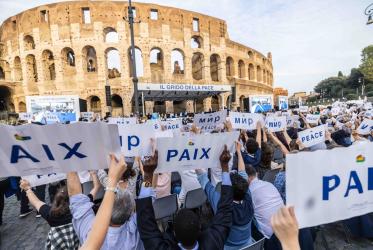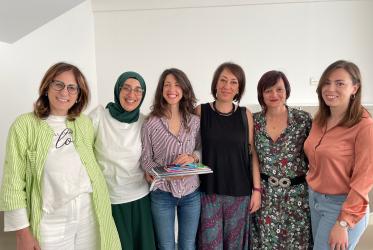Iglesia Evangélica Valdense
The Waldensian movement has its origins in the 12th century, when a rich merchant of Lyons, Valdes or Valdesius, decided to dedicate himself to the preaching of the gospel to the lower classes of society. At the Third Lateran Council (1179), Valdes and his followers sought ecclesiastical recognition. The pope expressed approval of Valdes' vow of voluntary poverty, but he and his companions were forbidden to preach except by invitation of the clergy. Valdes and his community refused to obey, and the Council of Verona (1184) placed the "poor of Lyons" under the ban of excommunication. The Waldensians grew rapidly and spread, first in southern France, then in Piedmont, Lombardy and Germany. In the 15th century they made contacts with the Bohemian Hussites. For a brief period they enjoyed in Piedmont a relative measure of freedom and built many churches. After the revocation of the Edict of Nantes (1685) in France, many were compelled, in terrible conditions, to cross the mountains to Switzerland. The small minority that stayed was forced to live in an alpine ghetto for 150 years, excluded from the cultural, social and political life of Piedmont at the time. They survived thanks to the international contacts of the Waldensian movement. It was not until 1848 that they were given real political and religious freedom in Italy. Today Waldensians still live as a diaspora, scattered over Italy, Uruguay, Argentina, western Europe and North America.
Waldensians and Methodists in Italy merged to become a united church in 1975, although both have kept their specific identities. The ecumenical scene in Italy is encouraging today. In addition to the dialogue with Judaism and with other living faiths, there are programmes of practical cooperation with the Roman Catholic Church, particularly the plan to publish an ecumenical Bible translation.
Waldensians are mainly located in the so-called Waldensian valleys, to the west of Turin, where the congregations are numerically important. But they are also spread countrywide and in many Italian cities they represent an interesting partner for ecumenical and cultural dialogue. Even if there has not been a rise in the number of church members, every year there are new people who find in these churches a different way to live their Christian faith, to debate and to exercise democracy.
Among the church's institutions are a high school at Torre Pellice (near Turin), a theological faculty in Rome, a religious publishing house, the centre of Agape in North Italy (built by international youth teams after the war to provide a meeting place for young people concerned by the renewal of the church), and the diaconal centres in the Sicilian towns of Riesi and Palermo, which bring hope and help in a situation of poverty and apathy. The church also runs several old people's homes and institutes caring for children and handicapped persons. In recent years the progressive dismantlement of welfare in Italy has caused many difficulties for the Waldensian Church which was forced to transfer its three hospitals of Piedmont to the health public service.
Today an important challenge is represented by the remarkable number of evangelical immigrants who join the Waldensian churches, introducing important changes. About 200,000 evangelical immigrants (from Africa to the Far East) are estimated to live in Italy. The purpose is not only hospitality towards these brothers and sisters, but also collaboration and integration (old people's homes, institutes for child care or handicapped persons).




